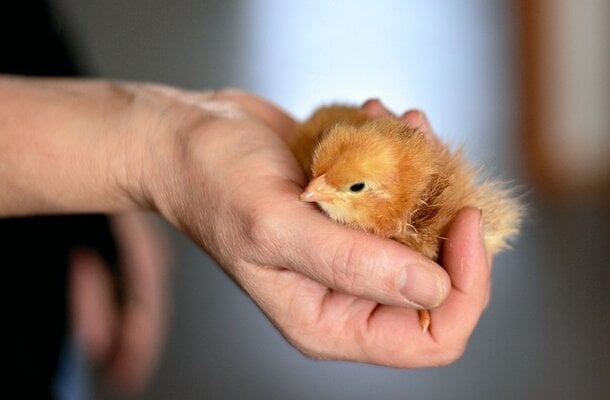Baby chicks are delicate creatures that need proper care and attention, especially during the first few weeks of their life. One of the most crucial aspects of taking care of chicks is to keep them warm. Unlike adult chickens, baby chicks cannot regulate their body temperature, and they require external heat to survive. Therefore, if you are a new chicken owner or planning to hatch your chicks, it is essential to learn how to warm up a baby chick correctly.
In this article, we will discuss everything you need to know about how to warm up a baby chick, including the ideal temperature, heat sources, and other essential tips for raising healthy chicks.

It is essential to monitor the temperature inside the brooder regularly using a thermometer to ensure that it remains within the ideal range. Sudden temperature changes can be dangerous for baby chicks and can lead to various health problems, such as dehydration, stress, and even death.


In this article, we will discuss everything you need to know about how to warm up a baby chick, including the ideal temperature, heat sources, and other essential tips for raising healthy chicks.
Ideal Temperature for Baby Chicks
Before we discuss how to warm up baby chicks, it is essential to understand the ideal temperature range for them. The ideal temperature for baby chicks is around 95-100°F (35-38°C) for the first week of their life. After the first week, the temperature can be gradually reduced by 5°F (2°C) per week until it reaches room temperature.It is essential to monitor the temperature inside the brooder regularly using a thermometer to ensure that it remains within the ideal range. Sudden temperature changes can be dangerous for baby chicks and can lead to various health problems, such as dehydration, stress, and even death.
Heat Sources for Warming Up Baby Chicks
There are several ways to provide heat to baby chicks, and choosing the right heat source depends on various factors, such as the number of chicks, the size of the brooder, and the outside temperature. Here are some of the most common heat sources for warming up baby chicks:Heat Lamp
A heat lamp is a popular choice for keeping baby chicks warm. It is a simple and effective way to provide heat and can be easily adjusted to maintain the ideal temperature. However, it is essential to use a heat lamp with caution and keep it away from flammable materials to prevent any accidents.Advantages:
- Heat lamps are relatively inexpensive and widely available.
- They can be easily adjusted to maintain the ideal temperature.
- They are effective in providing heat and can warm up a large brooder.
- They are versatile and can be used for different types of poultry, including ducks and turkeys.
Disadvantages:
- Heat lamps can be dangerous and cause fires if not used with caution.
- They can emit harmful UV rays that can damage the chicks' eyesight.
- They can be noisy and disruptive, especially if the chicks are in a bedroom or living area.
- They can create a hot spot under the lamp, which can cause dehydration or overheating.
Heating Pad
Another way to provide heat to baby chicks is by using a heating pad. You can place the heating pad under a section of the brooder and cover it with a towel or newspaper to prevent direct contact with the chicks. Heating pads are ideal for smaller brooders and can provide a gentle and consistent heat source.Advantages:
- Heating pads are relatively safe and can be used with minimal supervision.
- They are energy-efficient and can provide a gentle and consistent heat source.
- They are quiet and do not emit any harmful UV rays.
- They are versatile and can be used for different types of poultry, including ducks and turkeys.
Disadvantages:
- Heating pads are less effective in warming up a large brooder.
- They require a power source and may not be ideal for outdoor use.
- They can be expensive, especially if you need multiple pads for a large brooder.
Brooder Plate
A brooder plate is a newer technology that provides a natural and safe way to warm up baby chicks. It mimics the heat produced by a mother hen and provides warmth from the underside, similar to a heating pad. Brooder plates are more expensive than other heat sources but are energy-efficient and easy to use.Advantages:
- Brooder plates provide a natural and safe way to warm up baby chicks.
- They mimic the heat produced by a mother hen and provide warmth from the underside, similar to a heating pad.
- They are energy-efficient and can be used with minimal supervision.
- They are quiet and do not emit any harmful UV rays.
Disadvantages:
- Brooder plates are more expensive than other heat sources.
- They require a power source and may not be ideal for outdoor use.
- They are less effective in warming up a large brooder.
- They may not be as readily available as other heat sources.

